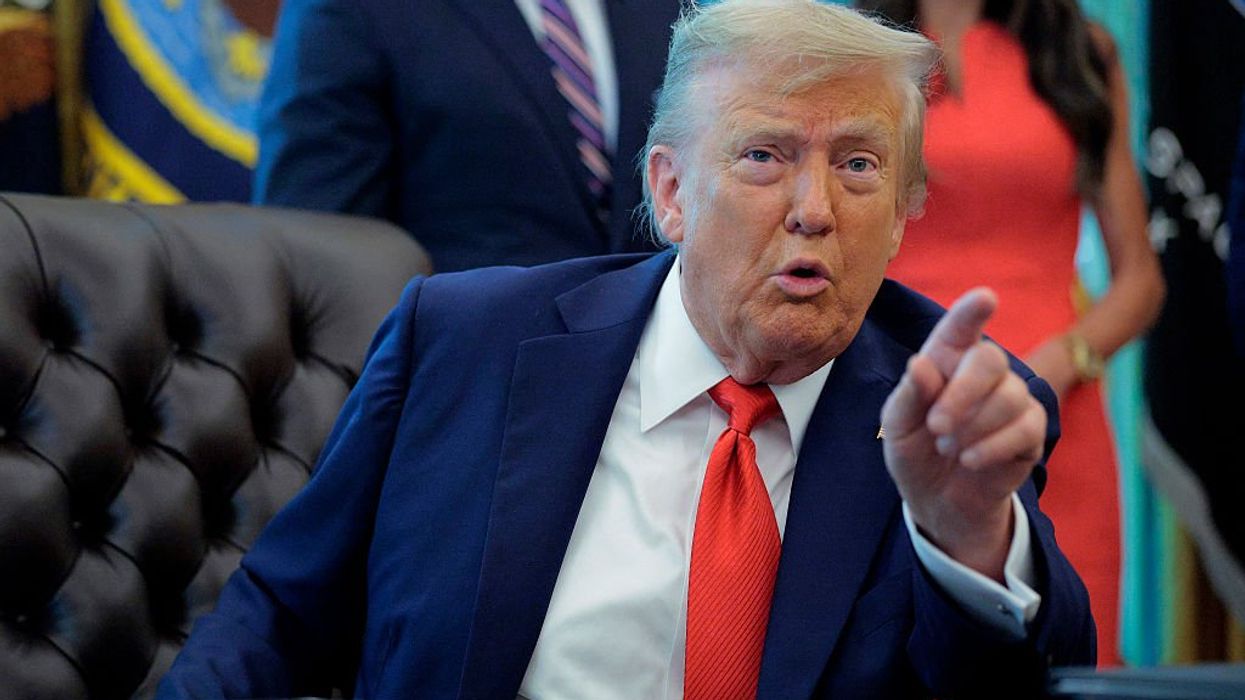Glenn joined Meet the Press Sunday morning and once again declared his commitment to #NeverTrump as well as his #NeverHillary --- but it was his comment about Ted Cruz that really turned some heads.
"By the way, my apologies yesterday," Glenn said on his radio program Monday. "I said, 'If Ted Cruz endorses Donald Trump tomorrow in his speech, it will be official that I will have no one I can trust in Washington.' I said that on Meet the Press. And I was deluged with email --- 'Has Mike Lee done something wrong?' No! Mike Lee --- I wasn't thinking of Mike yesterday."
RELATED: Glenn to Chuck Todd: Both Parties Are ‘So Out of Touch’ With Americans
Lee didn't seem the least bit worried and laughed it off.
"I'm easy to forget," Lee quipped.
As it goes with friends at times, the conversation bounced around and hit on a lot of topics so here are a few of the highlights.
Republican National Convention
With the convention taking center stage, the conversation shifted to Lee's role in the Trump Show. Lee had been described as the most influential #NeverTrump person on the Rules Committee for the convention in several stories in the past week, and Glenn asked how things went at their meeting over the weekend.
"I've heard it from both sides that the GOP did what they did to the Ron Paul people last time and just squashed and actually were holding up signs --- 'Trump people, GOP people, vote no on this.' Is that true?" Glenn asked.
Lee replied in the affirmative, saying it was unlike anything he'd ever seen.
"In fact, the sign said, 'Trump/RNC, vote no.' So it was surreal," Lee said. "It was bizarro-world in which the Trump campaign had teamed up with the RNC establishment powers that be to completely shut out calls for reform from grassroots conservatives. I was stunned."
Civil Unrest and Martial Law
With many people at a loss for what to do in this election, mixed with the civil unrest and international terrorism, some are now calling for "temporary" suspensions of certain laws or constitutional rights. Lee wrote a book called Our Lost Constitution, and as a history buff and champion of the constitution, Glenn picked his brain about martial law.
"To answer your question, this is always a possibility," Lee said. "It is always a possibility here or anywhere in the world because of human nature. Look, human beings are fallible. They make mistakes. They're not inherently evil, but they make mistakes. And that's why we need constitutions."
Three Words to Save Liberty
"Everyone I talk to says --- that understands really where we are, 'It's too late. It's too late,'" Glenn said.
Lee was quick to jump in and disagree.
"But it's not too late," he said.
Glenn held his ground, vehemently.
"Mike, we have people --- we have people on both sides of the aisle --- and a lot of Americans are going along with it," Glenn said. "When that happened in Orlando, they were talking about curtailing the First, Second, Fourth, Fifth, and Sixth Amendment. We had people on both sides talking about doing that in Congress. How do you save it when people don't even know what their rights are and are so willing just to give them up?"
Lee said it will all come down to three words and people will realize what needs to be done.
"All they need is the ability to recognize deprivations of the Constitution when they arise, and just as importantly, to be able to trigger three words: THIS IS WHY," Lee said. "This is why we have the Fourth Amendment. This is why we have the Legislative Powers Clause. This is why we have the Origination Clause."
Lee left with some parting words of wisdom for Glenn and the listeners.
"We can still win this. But we've got to win the conversation. We have to have the conversation in the first place," Lee said. "That conversation hasn't been taking place because our schools don't teach civics anymore like they used to. They don't teach the stories behind our Constitution."
Listen to this segment from The Glenn Beck Program:
Featured Image: U.S. Sen. Mike Lee (R-UT) speaks during day two of the 2014 Republican Leadership Conference on May 30, 2014 in New Orleans, Louisiana. (Photo by Justin Sullivan/Getty Images)

 Chip Somodevilla / Staff | Getty Images
Chip Somodevilla / Staff | Getty Images
 ROBYN BECK / Contributor | Getty Images
ROBYN BECK / Contributor | Getty Images Andrew Harnik / Staff | Getty Images
Andrew Harnik / Staff | Getty Images